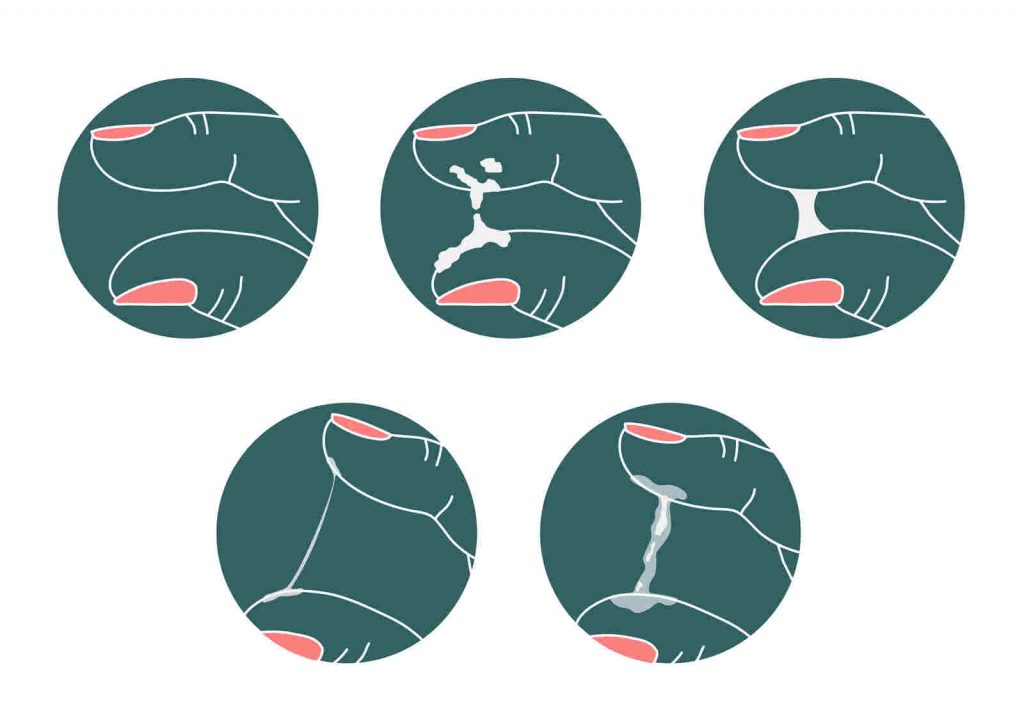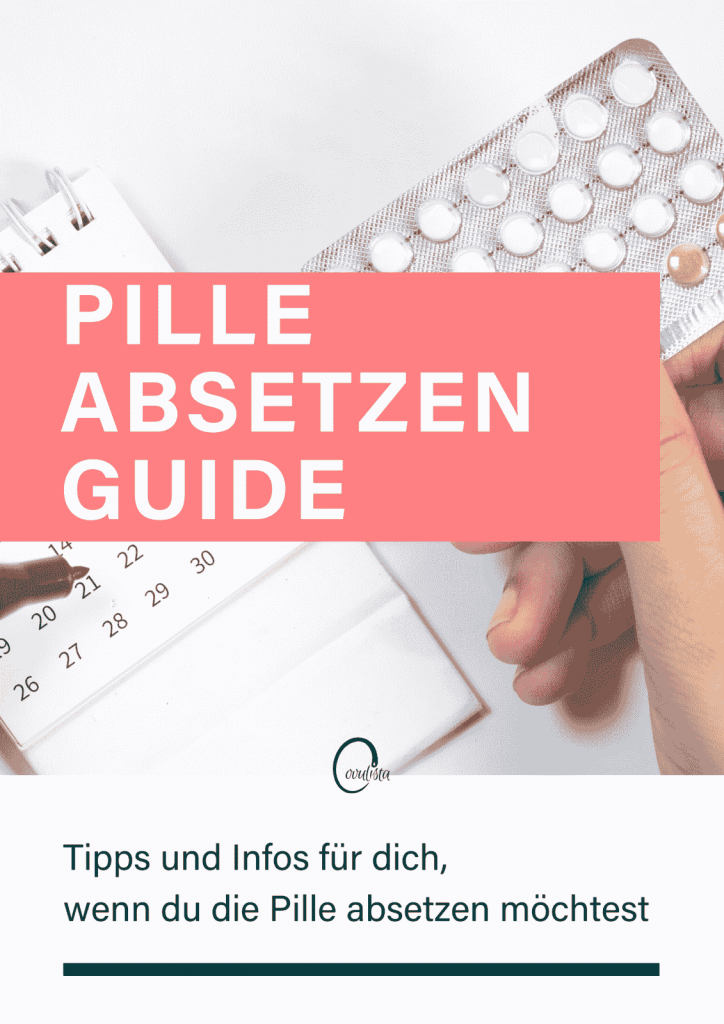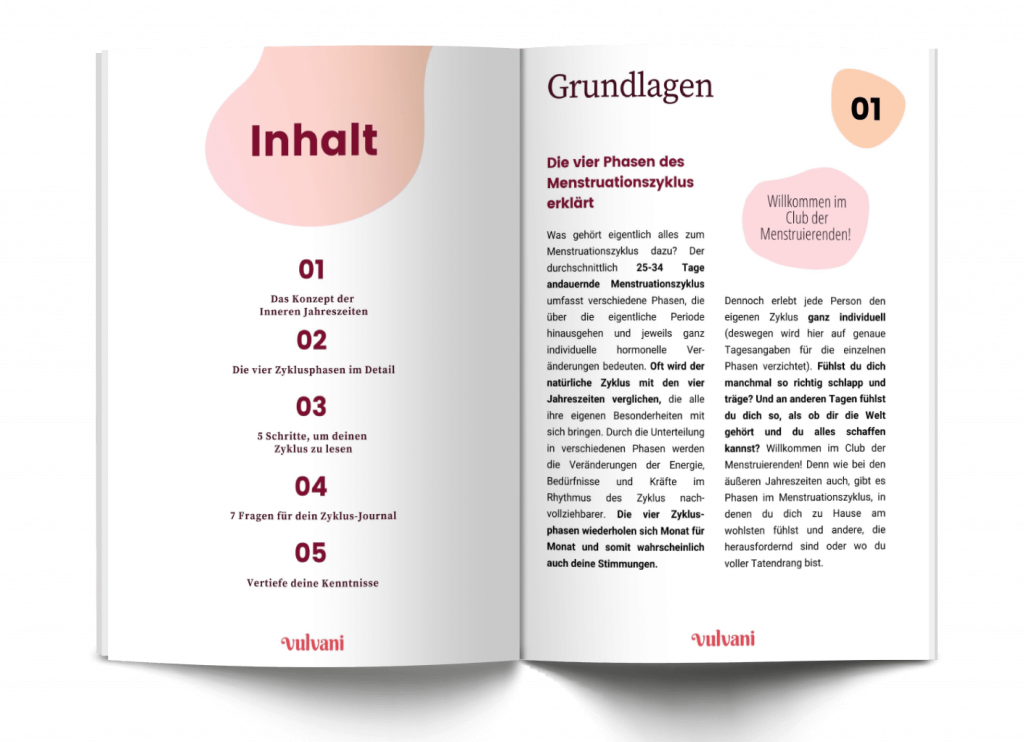
Discovering your menstruation as a spiritual practice
Yasmine understands her menstruation as a spiritual practice and shares in this interview how she is connecting more with her own body through cycle awareness.
Non-hormonal contraception – what is it actually and how does it work properly? Katharina from Ovulista explains the advantages of hormone-free contraception, her top three tips to stop taking the pill, and how to fill out a cycle sheet correctly. And if you’ve always wanted to know what cervical mucus is, read on!
I am Katharina (28) from Hamburg. I am a certified expert in cycle health and natural family planning (NFP) and the founder of Ovulista. When I’m not working for Ovulista, I like to go running, dancing, walking with friends, or to a café or restaurant.
Ovulista is a company with the aim of providing scientific cycle knowledge and showing menstruators how they can use their cycle for their benefit – for their health, for contraception, or a wish for a child. I stopped taking the pill a good five years ago and subsequently experienced a long period without menstruation. During this phase, I studied the cycle and learned a lot that I didn’t know – although I always felt well informed!
I started with Ovulista because I wanted to share my knowledge, although initially it was just a hobby. In the meantime, I have undergone various training and further education in the field of cycle health and NFP. Through Ovulista, I would like to achieve that NFP and cycle health are also taken more seriously in medicine in the long term. My goal is that many cycle-related complaints such as PMS or menstrual pain are no longer declared “normal” or treated with the pill.

For me, non-hormonal contraception means contraceptive methods that do not interfere with the natural hormone balance. Hormone-free contraceptive methods are, for example, barrier methods such as condoms and diaphragms, copper solutions, and methods of natural family planning (NFP). When I talk about NFP however, I always mean the safest NFP method, the symptothermal method. In this method, two bodily signs, cervical mucus or cervix and, basal body temperature are observed and evaluated independently. This double-check makes this NFP method as safe as the pill or hormonal contraception.
Cervical mucus is what most people know as “discharge”. It is a secretion produced at the cervix (neck of the womb). Cervical mucus plays a very important role in health and fertility. Depending on which phase of your cycle you are in, it is either part of your immune system or life insurance for sperm on their way to the egg.

On the non-fertile days of the cycle, cervical mucus is thick, sticky and, like a plug that seals the cervix. On fertile days it becomes more fluid and often more visible, then it supports sperm on their way into the uterus.
By observing cervical mucus, you can therefore easily see what is happening hormonally in your body.
The most significant advantage of non-hormonal contraception is that the natural hormonal balance remains unaffected. Hormones are sent through the body via the bloodstream and therefore never act only locally – even if this is often claimed. The hormone balance thus not only influences the menstrual cycle, but also the choice of partner, mood, libido, appetite, energy level, and much more.
If the natural hormone balance is manipulated with hormonal contraception, this influences all areas of life. The pill is also a medical drug and comes with a correspondingly long list of side effects. When hormone-free contraception is used with NFP, these side effects do not occur. Other advantages of contraception with NFP are: improved body knowledge and body awareness, and the possibility to integrate the cycle into life and use it for oneself.
Non-hormonal contraception is suitable for anyone who is not comfortable with hormonal contraception – be it because of the side effects, because they are vegan or because they want to have a natural cycle.
There is a prejudice against NFP that the method is only suitable for menstruating people who have a regular cycle and lifestyle. But this is not true. Because NFP involves daily monitoring of body signs, fertility is always assessed based on of the current cycle and not based on past cycles. NFP is therefore also suitable for irregular cycles.
With NFP you don’t have to change or adapt your lifestyle. Everything is allowed, you just have to know how to deal with some things in the evaluation. So NFP is also good for people who work shifts, for students who like to party, and for people who need to calm the baby at night.
Nevertheless, you should consider the following three points:
If you can answer “yes” to this, then NFP is suitable for you as contraception.

My tips for you:
You can find tips and more information about this in my German Stop Taking the Pill Guide, available for download for 0€.
I currently offer a German online course program about NFP for contraception as well as one-to-one consultations, for people who have previously learned NFP on their own and now have questions or challenges in using it. Individual counseling is also already available for menstruating people and couples who want to use NFP if they wish to have children. An online course for those wishing to have children is still being planned.
The online course program about NFP for contraception is called “Naturally Safe” and is suitable for everyone who wants to use NFP for birth control safely. The program consists of about four hours of video material explaining the method and how to use it, group coaching sessions to discuss individual questions about your observations and cycle recordings, a digital course book with practice exercises, and a support group for sharing and asking questions.
More about the online course program and the individual consultations can be found on my website.
A cycle sheet is for recording your daily observations (cervical mucus/cervix/basal body temperature).
You start a new cycle sheet when your period starts. During the days of menstruation, you record the amount of bleeding and any symptoms that occur. You also record your measurement time, your rounded basal body temperature, and any disturbing factors or peculiarities that may have affected your temperature. At the end of your period, record what you observed about your cervical mucus: Appearance and sensation/feeling. Then you choose the appropriate category for your cervical mucus observation.
You can think of it as drawing a new picture every cycle and then using that picture you can evaluate your cycle health and fertile phase. There are analog cycle sheets, where you write down your observations by hand with a pen and do the evaluations yourself, and digital cycle sheets in the form of apps.
I recommend starting with an analog sheet in the learning phase of the method so that you are sure you have understood everything correctly. After that, you can also switch to an app to help you with the evaluation. It is important for a correct evaluation (whether with or without an app) that you know what you are doing.
First, I would like to thank you for the interview. I am always very happy when I can talk about my cycle, menstruation, and NFP. I think many more menstruators should get to know their cycle and their body better! That’s why I find Vulvani’s work so valuable. Then I would like to say two things in conclusion:



Yasmine understands her menstruation as a spiritual practice and shares in this interview how she is connecting more with her own body through cycle awareness.

What options are there for male birth control? Ailsa delivers an overview of what is available now, and what may come in the future.

Sustainable underwear? The founders of TUKEA talk about fair labour conditions, body diversity and body literacy.
…and empower countless women to make empowered choices about their bodies!

